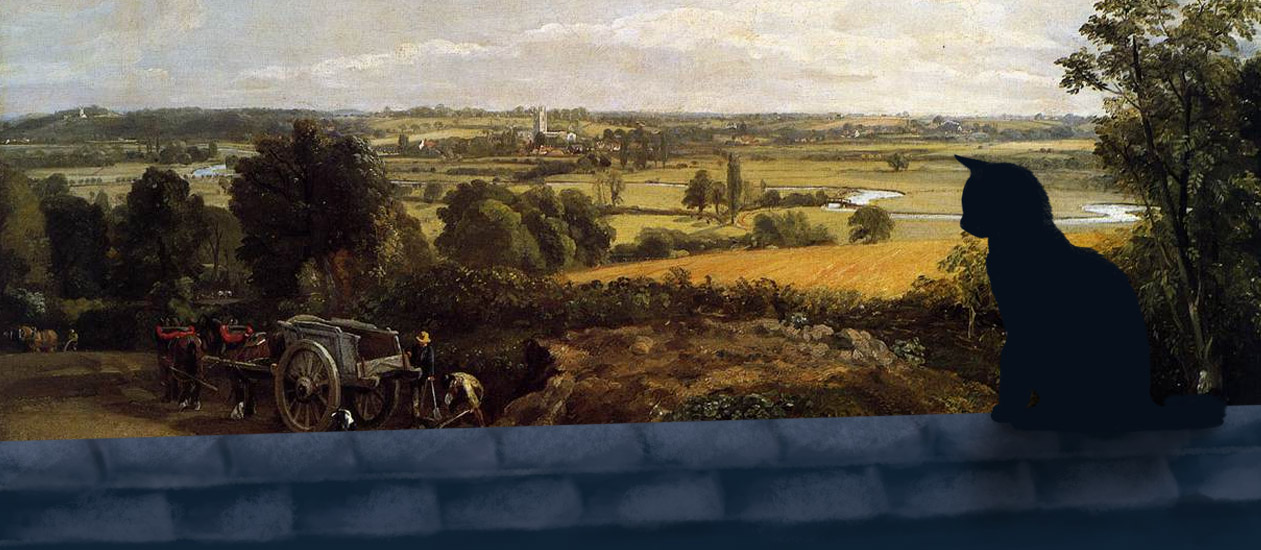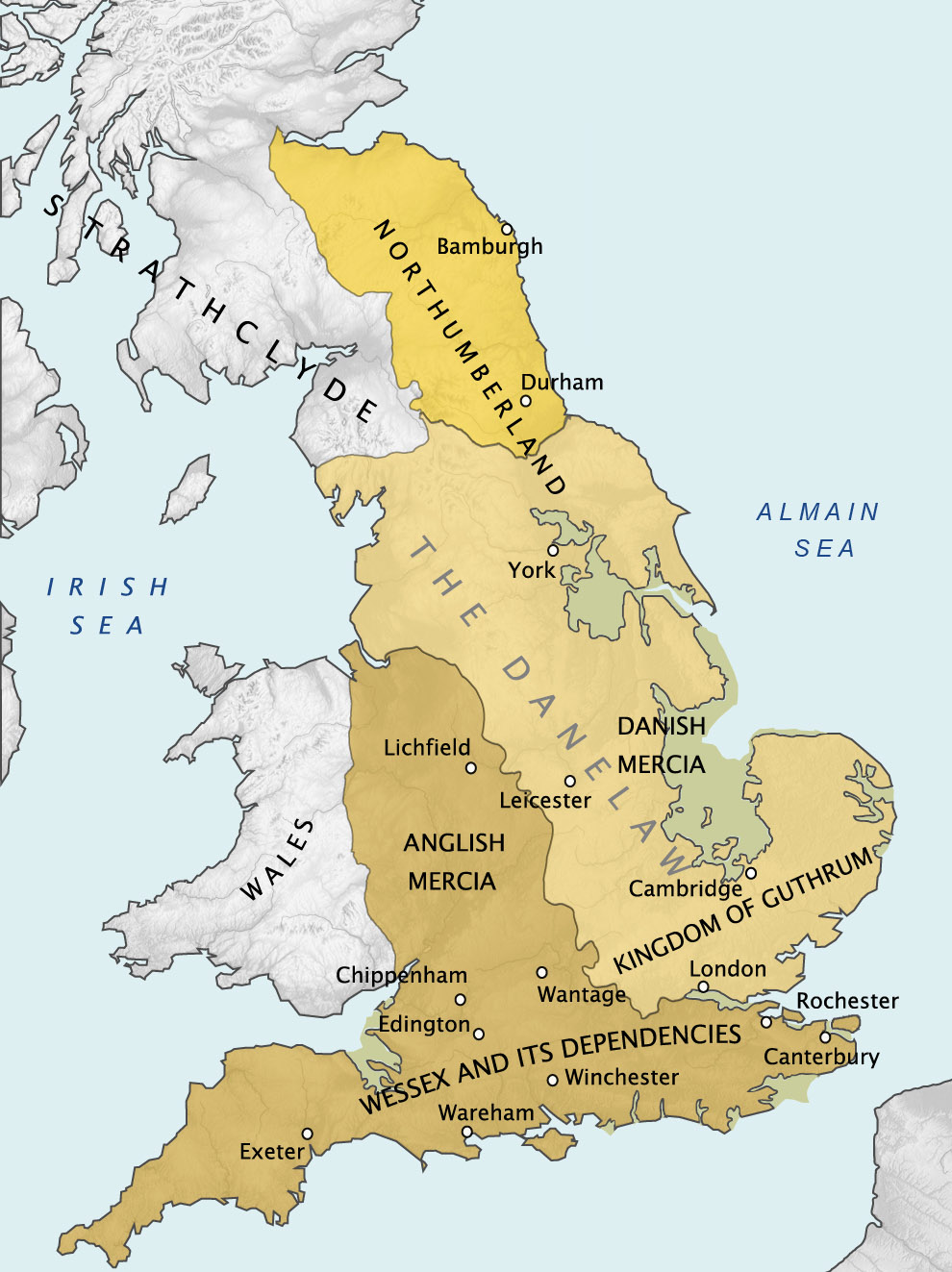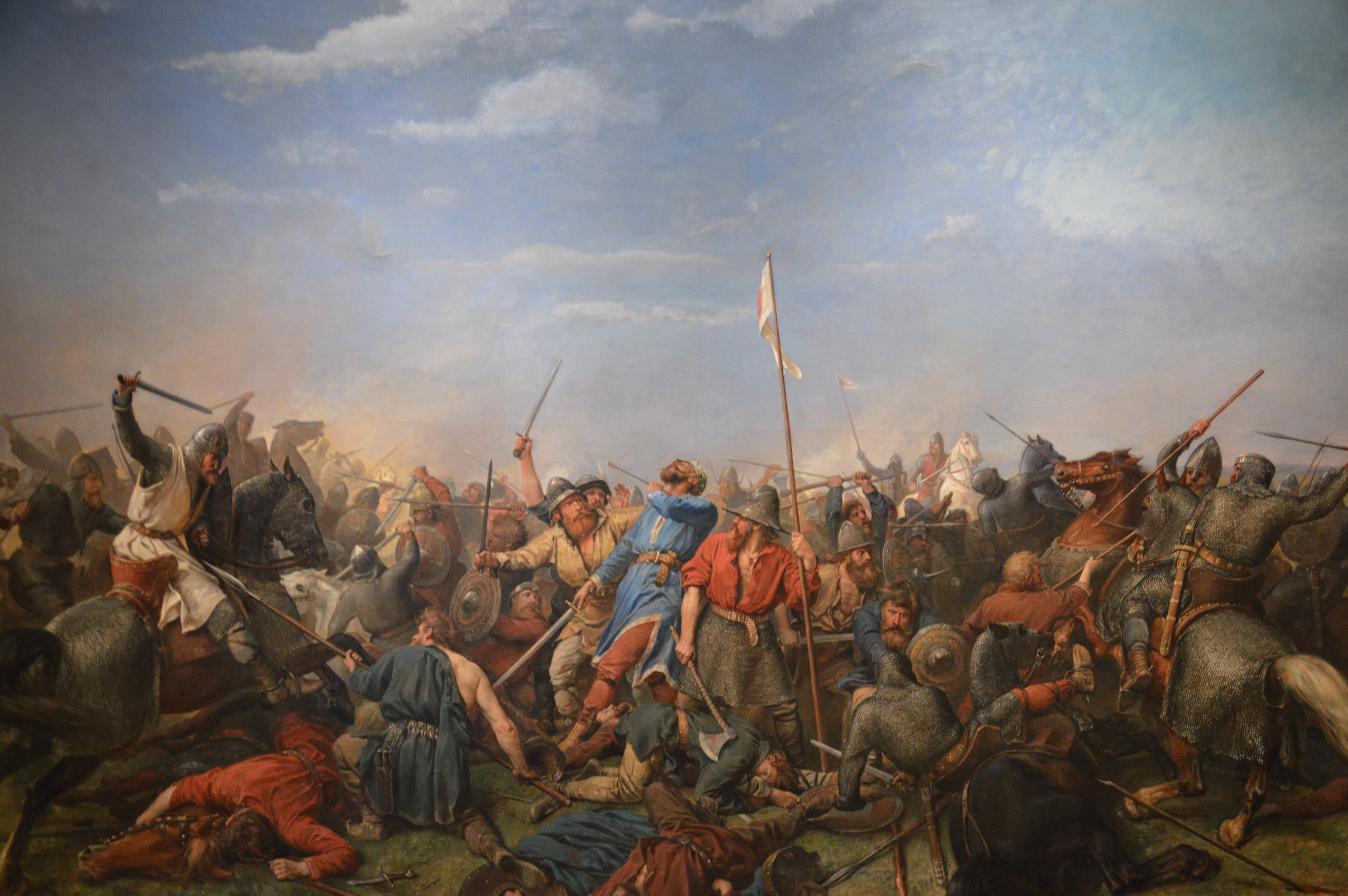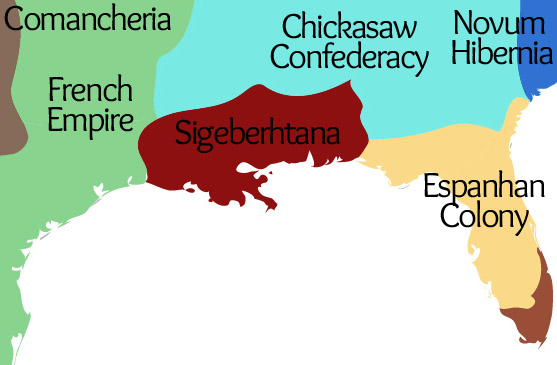Anglia
Kingdom of Anglia
In the sprawling countryside of Anglia, one can find all that I have ever truly craved: good drink, hearty people, and spirited songs with deep roots. A simple country, perhaps, but a homely one.
Anglia is a small kingdom that shares the island of Prettanika with Gaeland. This dreary and rainy island remains a steadfast supporter of the Roman Catholic Church and has resisted efforts to take it over by both Ireland and Gaeland.
History
The Seven Kingdoms
After the Romans left Prettanika, the land that is now England broke up into seven small kingdoms: East Anglia, Mercia, Northumbria, Kent, Essex, Sussex, and Wessex. These were ruled by the Anglo-Saxons, who had settled the land in the 5th century. Of these Mercia was the most powerful for the first few centuries, until it gradually began to decline in the 8th century.
Between the 8th and 11th centuries, vikings plundered Prettanika. The first raids in the British Isles were in the late 8th century, mainly on churches and monasteries. In the 860s, instead of raids, the Danes mounted a full-scale invasion. Within ten years nearly all of the Anglo-Saxon kingdoms fell to the invaders: Northumbria in 867, East Anglia in 869, and nearly all of Mercia in 874–77.
Viking Rule and the Danelaw
Only the Kingdom of Wessex was able to survive. In March 878, the King of Wessex, Alfred built a fortress in the marshes of Somerset. Using this as a base, he put together an army to drive back the vikings.
Ultimately the Danes capitulated, and their leader agreed to withdraw from Wessex. This led to a peace treaty, which defined the boundaries of the area to be ruled by the Danes (the Danelaw) and those of Wessex. The Kingdom of Wessex controlled part of the Midlands and the whole of the South, while the Danes held East Anglia and the North.
Over the next few centuries, Anglia was constantly torn between the tensions of Wessex and the vikings. Territory shifted, and Alfred's descendants continued to resist and drive out the Danes. Dispute over who had claim to Anglia lasted until the 11th century
The Last Viking War
In 1066, Harold Godwinson became king upon the death of Edward the Confessor. His rule was tested in September of that year when Harald Hardrada of Norway landed at the mouth of the River Tyne intending to claim the Angle crown for himself.
Harold led his army north on a forced march from London, reached Yorkshire in four days, and caught Hardrada by surprise. On 25 September, in the Battle of Stamford Bridge, Harold defeated Hardrada and Tostig, who were both killed. Harold's rule of Anglia was cemented, and the Godwins became Anglia's first great dynasty.
The Norman Invasion?
In 987, the king of France sent troops into Normandy to kick out the Norse Dukes of Normandy. The Northmen were driven back to Danemark and Normandy was rid of Norse influence. "William the Conqueror" was never born.Invasion of Wales
With Anglia secure against vikings and united under the Godwins, the main threat in the next era was raids from neighbouring Wales as Gaeland. The next few generations of kings routinely dealt with border skirmishes while focusing their finances on the building of cities and great cathedrals, especially in Lundenwic, York, and Wintancaester.
In the 13th century, Anglia annexed Wales and brought it under the domain of the Kingdom of Anglia as a principality.
The Angle Civil War
For centuries, Anglo-Saxon Anglia had been governed by both a king and the Witenagamot, a form of parliament. In 1278, King Albert I died without children, and the question of who would inherit fell to the Witengamot to decide.
The Witenagamot was torn between Albert's cousin, Godric, Earl of Wessex, and Ethelred, head of the Grantabridge branch of Godwins. While Anglia sat with no king and a Witenagamot pulling itself apart with arguments, Valdemar of Danemark, younger brother of King Eric V, also laid claim to the throne. He was a distant relation of the Godwins on his mother's side.
Valdemar sailed up the Thames and sacked the port torn of Lundenwic. Ethelred of Grantabridge led the counter-attack the drove Valdemar out of Anglia, which led the Witenagamot to agree on his coronation after his proven valour. With the possibility of future Danish invasions, a warrior king seemed suitable.
Ethelred feared that the Witenagamot was too powerful, and that the lack of a concrete law of succession in favour of allowing the Witenagamot to decide the next king would only lead to future chaos. In 1280, he attempted to introduce reforms that would increase monarchical power and establish a set law of inheritance.
The Witenagamot was outraged at this act. They brought forward Edgar, Earl of Kent, to be a new king that was more safely under their control. The rest of the noble houses of Anglia split between supported of Edgar, who wanted the Witenagamot to remain in power, and supporters of Ethelred, who agreed that a more powerful monarch with set succession was important for stability. This resulted in the Angle Civil War.
After the War
The war lasted three years and ended in victory for Ethelred. This was largely due to Ethelred's popular support among the masses after being hailed as the hero who defeated Valdemar. Ethelred granted mercy to his rivals to establish a reputation as a just and merciful ruler, and then reformed the Witenagamot as he had wanted.
The new Witenagamot was broken into three parts - one to represent the earldoms, one for the church, and one for the freedmen. The new Witenagamot had mostly the same functions and duties as the old, such as managing taxation and creating legislation, with the main difference being that it had no influence on succession and represented more of society. Ethelred created a system to determine order of succession, now known as Wintancaester Law.
Black Death
The 14th century was defined by the arrival of the Black Death. Nearly a third of Anglia's labour force died. Importation of textiles from Flanders ground to a halt as the plague ravaged the continent, so Anglia turned to producing their own textiles instead to try to rebuild the economy in the wake of the plague.
The second half of the 14th century was marked by rebuilding after the plague. With so many dead, surviving labourers could demand fairer wages and expanded rights. The Freedmen's house in the Witengamot pushed for labour reforms, beginning the gradual decline of feudalism.
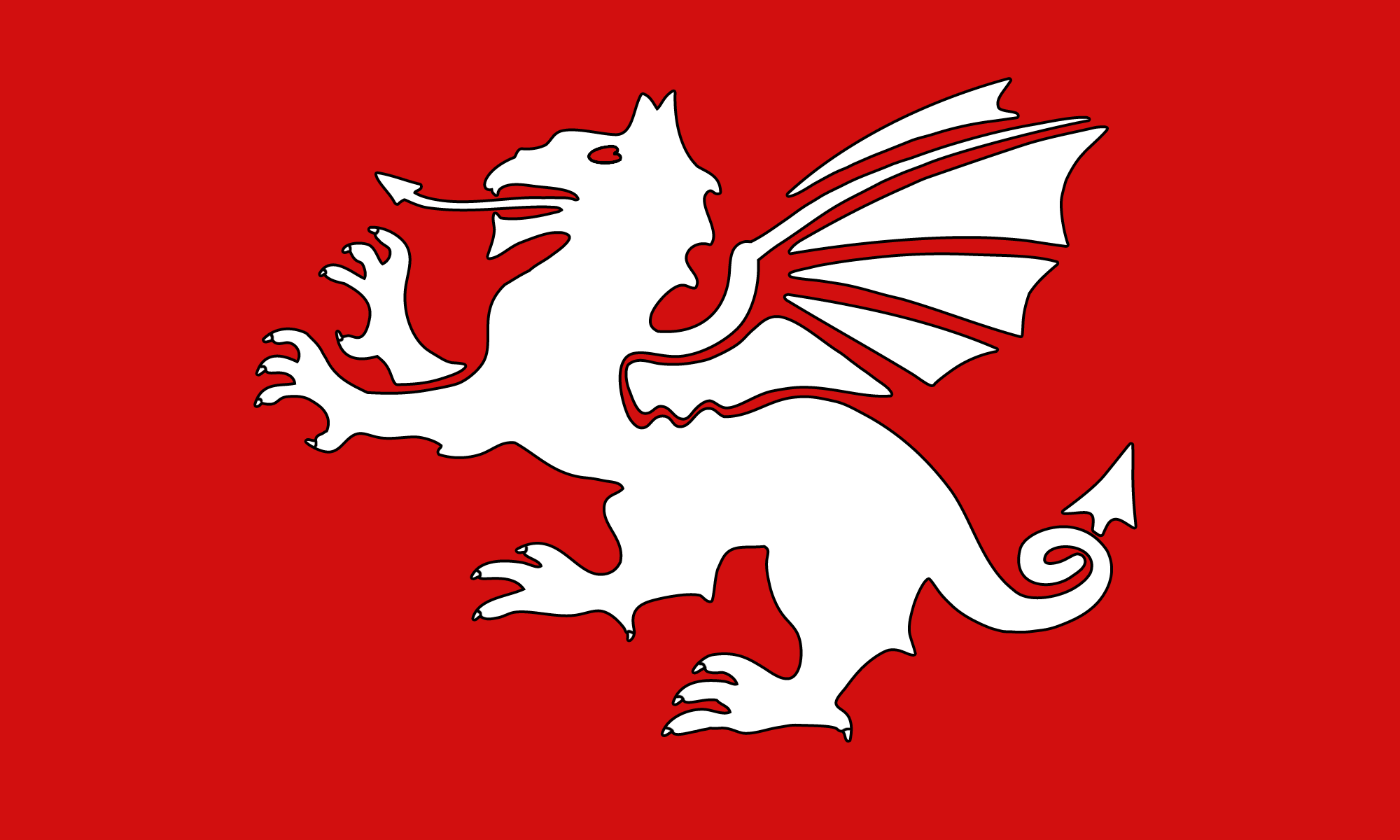
To God, ic wille bringan wuldor
Capital
Wintancaester
The New World
Throughout the 1400s, the Arbitrium Church began to spread away from Ireland. In 1432, King Albert IV declared the Roman Catholic Church the one and only church of Anglia, and Arbitriumism was strictly forbidden.
The so-called New World, TerreTernguiré, was discovered by the Irish at the end of the 15th century. This led to further conversions to Arbitriumism, as Ireland popularly stated that it was through following the teachings of Arbitriumism (namely, actively checking the future and choosing actions accordingly) that they found such success. Despite this, Anglia remained staunchly Catholic and established themselves as some of the strongest supporters of the Catholic church.
In 1590, Anglia attempted to seize a piece of the New World pie. With Ireland holding dominion over most of the northeast and Indigenous nations maintaining sovereignty over much of the continent, Anglia's only colonial possession was a small stretch of coastline in the southeast, where the Mississippi River meets the sea. It was called Sigeberhtana, named for the reigning King Sigeberht II. Although small and mostly made of swamp, it provided them with control of the mouth of the Mississippi and trade upriver.
Textiles and Trade
The 17th and 18th centuries were defined by Anglia's growing trade power in North Ternguiré. From Sigeberhtana, they imported tobacco and the invention of automatic weaving machines in the late 17th century caused a boom in Angle textile production at home.
Anglia's greatest problem was living in the shadows between the two powerful empires of Ireland and France, but their support from the Holy Roman Empire and Catholic church allowed them to maintain their sovereignty and stand as a strong Catholic kingdom carried by the power of trade.
Otherwise surrounded by Arbitrist powers, Anglia's greatest ally became Catholic Gaeland. Other than a brief war in 1753 over control of the new Spirit Bridge linking Gaeland to Ireland, the two countries coexist as friendly allies.
Religion
Anglia is a very Catholic nation. Arbitriumism was outlawed from the very beginnings of the church in the 14th century, and Protestantism was outlawed in 1551. Though there have been ups and downs in how intensely other religions are persecuted (from it being a capital crime with offenders actively sought out to being more or less tolerated), neither religion ever gained widespread support.
Today, religions other than Catholicism are quietly tolerated on a personal level. You are allowed to practice whatever faith you wish in your own home, but are not allowed to preach it in public - including holding official services. Preachers from other religions have gotten around these laws by holding services in their own living rooms, although if these "living rooms" grow too large and start resembling an actual church, authorities are likely to crack down on them.
Trade & Transport
Anglia's chief export is textiles made from wool. Their large flocks of sheep have provided surplus wool for centuries, and they took over domination of the industry after Flanders was ravaged by the Black Death.
Their other major trade good is tobacco, which is grown in Sigeberhtana in the New World and then exported to the rest of Europe. Also in North Ternguiré, Anglia has control over the mouth of the Mississippi river. All trade moving from the gulf upriver, or vice versa, passes their Angle land and pays the taxes to do so, boosting the Angle economy.

To God, ic wille bringan wuldor
To God, I will bring glory
Founding Date
AD 927
Type
Geopolitical, Kingdom
Demonym
Angle
Head of State
Government System
Monarchy, Constitutional
Power Structure
Unitary state
Economic System
Market economy
Currency
Angle pound
Legislative Body
Anglia's political scene is dominated by the Witenagamot. In the medieval past, the Witan (as it is commonly known, although "a Witan" is properly the name of one of its members) was at times more powerful than the kings themselves, and was in charge of deciding who the next king would be. They also ruled during interregnum periods.
The Witenagamot saw a decrease in power after the Angle Civil War. The reforms made by King Ethelred established a strict order of succession, so the Witenagamot no longer has the power to choose or outright veto the king's legal heir. It also led to a more diverse Witan, with three distinct sections: one for the clergy, one for the earldoms, and one for the freedmen. In the modern Witenagamot, all three houses each have 30 members. The reigning monarch presides over them all.
The Witenagamot creates legislature that must be approved by the king. They also have jurisdiction over proposed tax laws, and still manage the state during interregnum periods.
Official State Religion
Neighboring Nations
Notable Members

